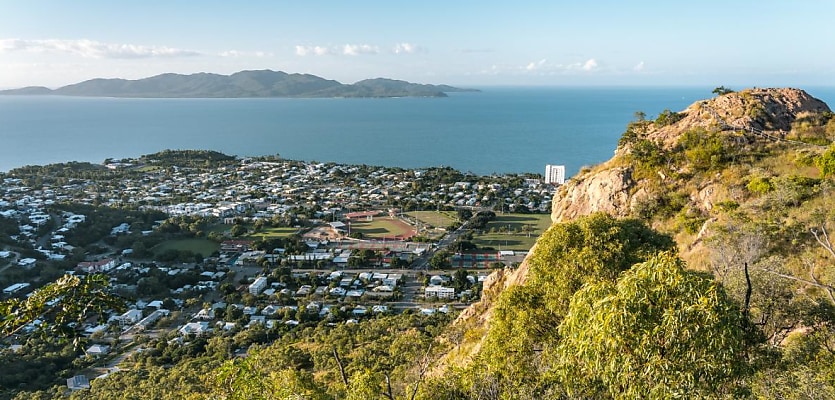Unfavourable investment conditions in Queensland have created a structural undersupply of housing and kept vacancy rates at critically low levels across the state, according to the Real Estate Institute of Queensland (REIQ).
The REIQ’s Residential Vacancy Report for the March 2025 quarter showed that rental availability has continued to tighten in Queensland, with the number of regions that tightened outweighing those that eased over the first quarter of 2025.
Of the 50 local government areas (LGAs) and subregions surveyed in the institute’s report, vacancy rates tightened in 24, were stable in 12 and climbed in 14 when compared to the previous quarter.
The report showed that Queensland’s statewide vacancy rate slipped from 1.0 per cent to 0.9 per cent, breaking a three-quarter-long period of steady conditions for the statewide vacancy rate.
The REIQ observed that rental pressure has been felt across most of the state, with 38 out of 50 LGAs and subregions posting tight vacancy rates of 1.0 per cent or less, which is far less than the institute’s healthy benchmark that is between 2.6 per cent and 3.5 per cent.
REIQ CEO Antonia Mercorella said that Queensland’s rental market had come into 2025 with even fewer options available, with nearly half of the state’s regions recording a tightening in vacancy rates.
“The pressure continues to mount in our inner and outer suburban areas – particularly in Brisbane and surrounds, which recorded one of the most notable tightening movements this quarter,” Mercorella said.
Even with the decrease in rental availability, Mercorella noted that market conditions have also worsened for agents and investors, with property managers reporting more subdued letting activity and increased days on market for rental properties, and landlords being more careful with tenant selection.
Mercorella said that the paradox of lower rental activity in the currently tight Queensland market could be attributed to the “fatigue” felt by both renters and landlords.
“Many renters are being priced out, stretching too far, or grouping up to rent, while lessors are holding firm on terms and expectations due to rising costs and more onerous legislative requirements,” she said.
The report showed that the Brisbane LGA’s vacancy rate declined by 0.3 percentage points from the December 2024 quarter to 1.0 per cent, with the surrounding regions of Pine Rivers, Redcliffe, and Moreton Bay all sitting between 0.6 per cent and 0.7 per cent.
At the extreme end of the market, the report showed that vacancies in the Goondiwindi market fell by 0.1 percentage point to now be 0.0 per cent, while rental availability in Cook remained at 0.0 per cent from the last quarter.
Tightened vacancy rates were commonplace across the state during the March 2025 quarter, with a further 16 regions, including Maryborough, Toowoomba, Caloundra Coast, and the Southern Downs, recording rates at or below 0.5 per cent.
While rental availability in the Noosa market rose 0.8 percentage points to a vacancy rate of 2.0 per cent – greatest relaxation of the quarter – the REIQ emphasised that this was not representative of the broader market due to price points in Noosa being largely out of reach for everyday Queenslanders.
The only markets which recorded vacancy rates that were classified as “healthy”’ by the REIQ were the Bay Islands and Issac LGAs which recorded vacancy rates of 2.5 per cent and 3.2 per cent, respectively.
However, the vacancy rate in the Bay Islands tightened by a whole 1 percentage point over the March quarter, which registered as the greatest decline in rental availability across Queensland’s LGAs.
Mercorella said that Queensland’s “stubbornly tight” rental conditions were the result of “years of underinvestment in housing supply” that has been further compounded by rapid population growth.
While she said there was no “silver bullet” that could solve Queensland’s rental crisis, Mercorella pushed for policy settings to incentivise the private investment that could fast-track the delivery of new housing supply.
“We continue to see a severe imbalance between supply and demand in Queensland’s rental market, and it is crucial that we focus on addressing the roadblocks that are preventing new housing from coming online,” Mercorella said.
Following the passage of the federal election and last phase of Queensland rental reforms that came into effect on 1 May 2025, Mercorella said she expects greater certainty to return to the state’s market, which will also encourage more long-term decision making from buyers, sellers and investors.
Nevertheless, Mercorella warned that conditions will not meaningfully improve unless all levels of government work together to cut red tape, fast-track housing approvals and remove barriers to private investment.
“Whether it’s investing in enabling infrastructure, land release or planning reforms, all levels of government must work together to ensure that there are enough properties available to meet demand,” Mercorella said.







You are not authorised to post comments.
Comments will undergo moderation before they get published.